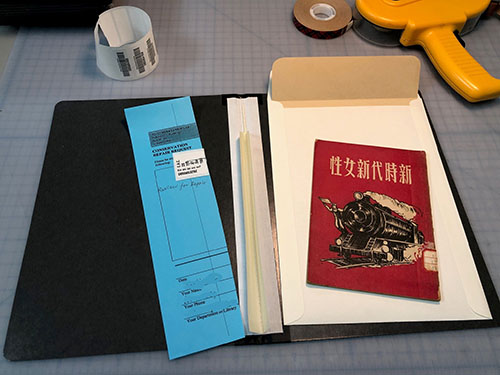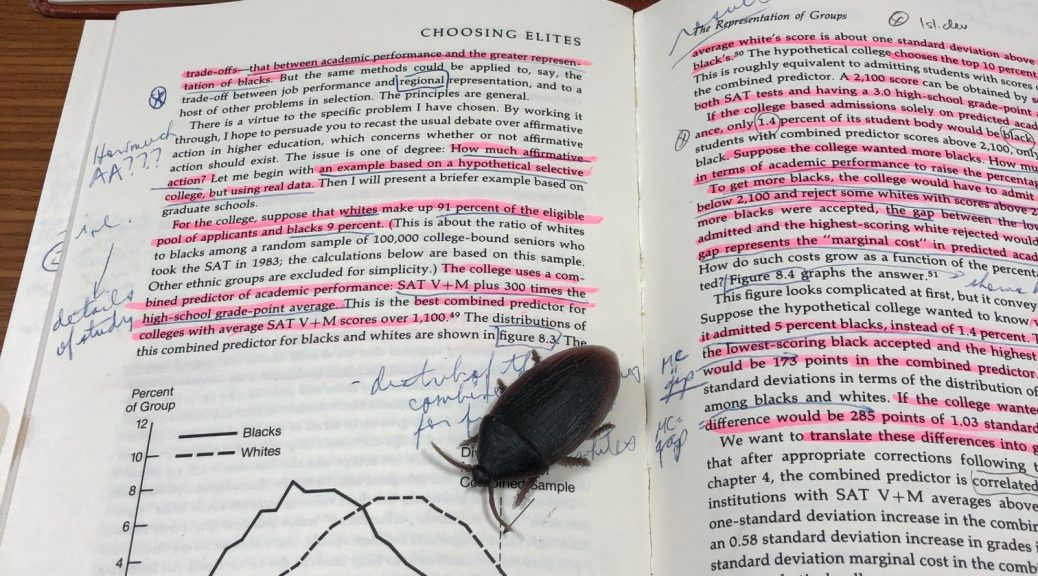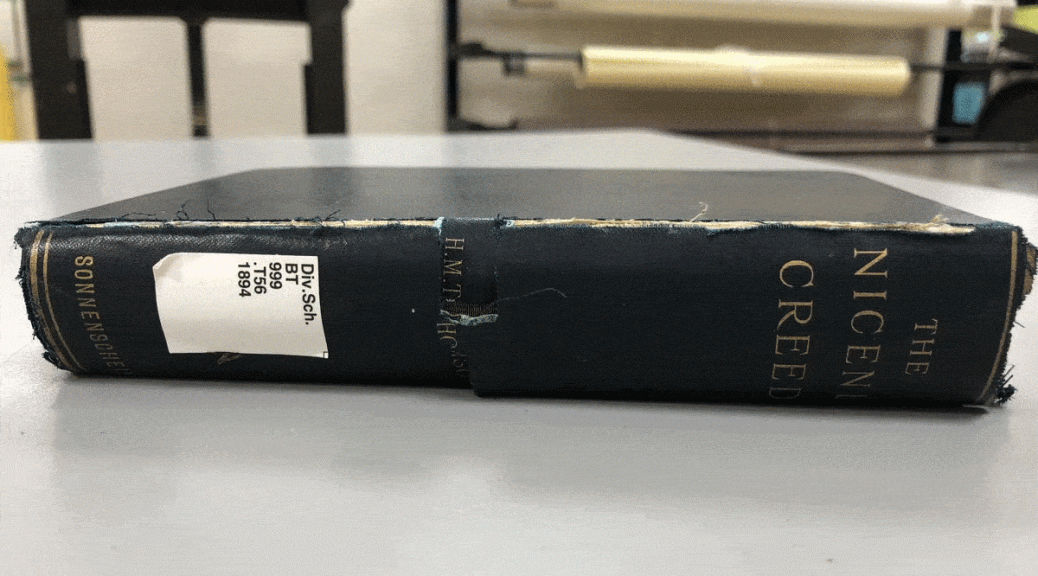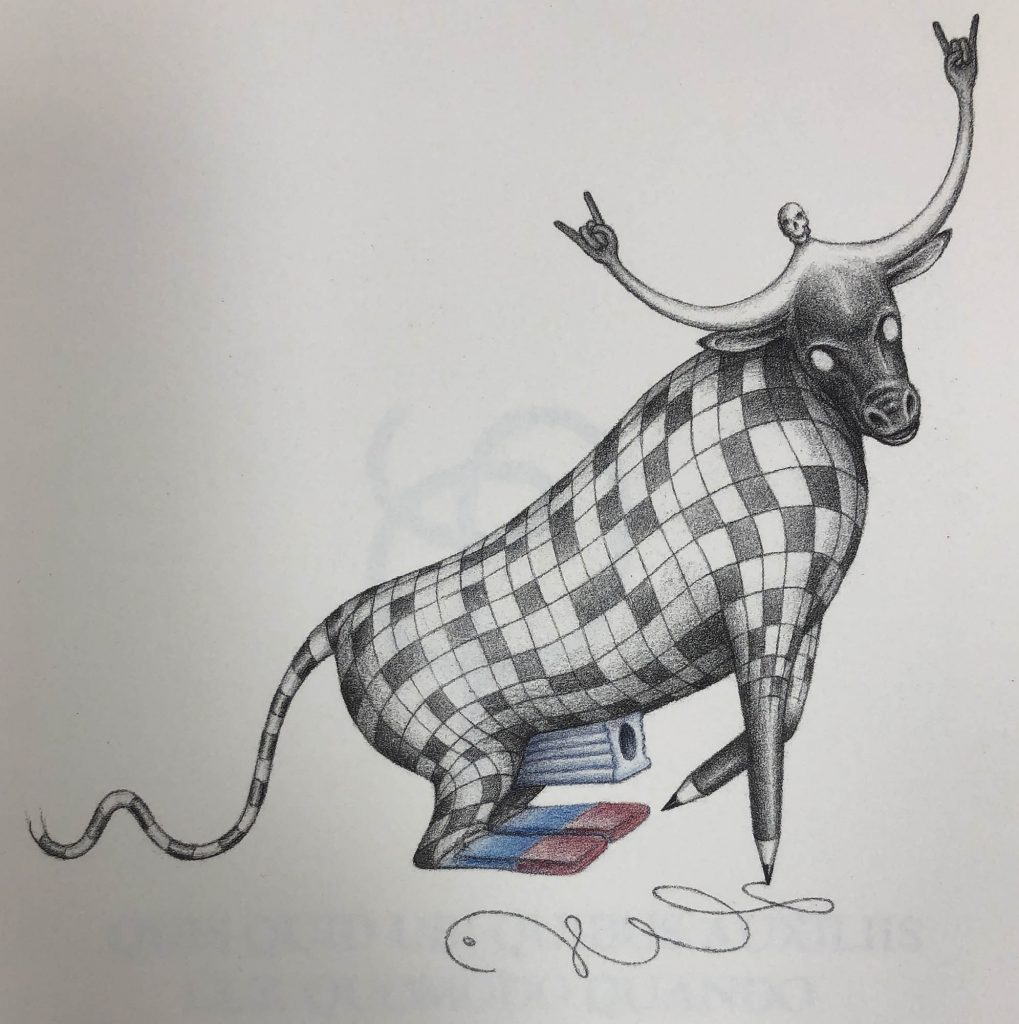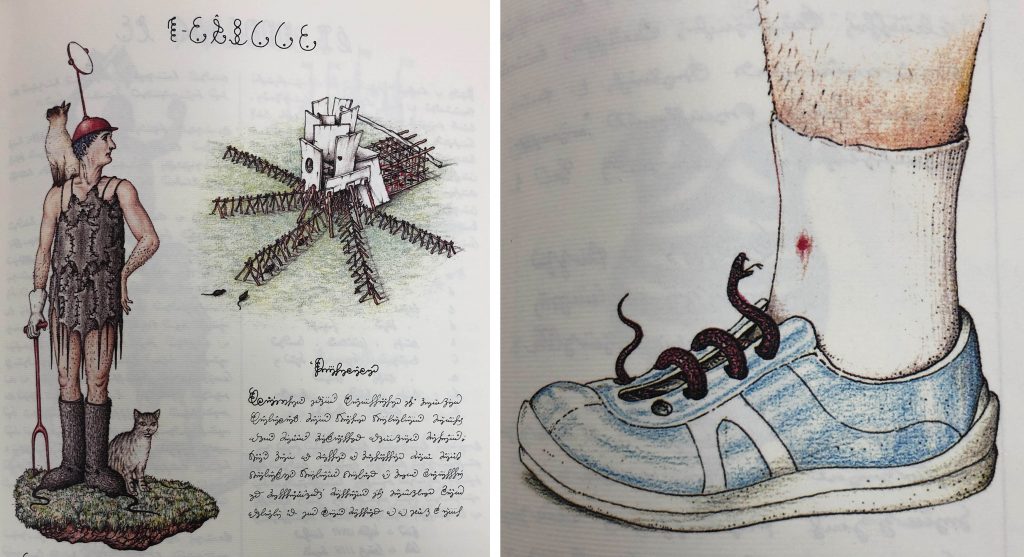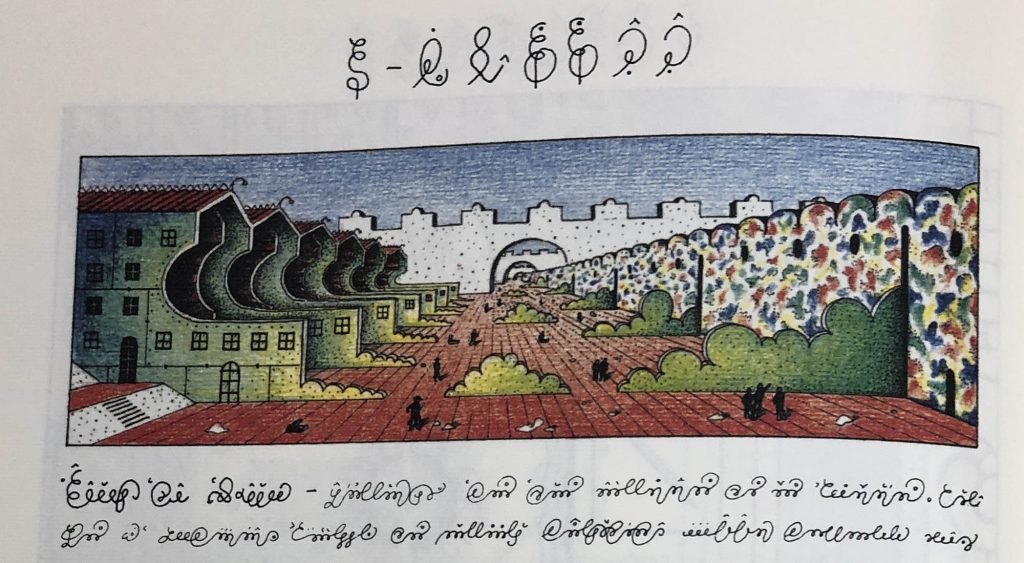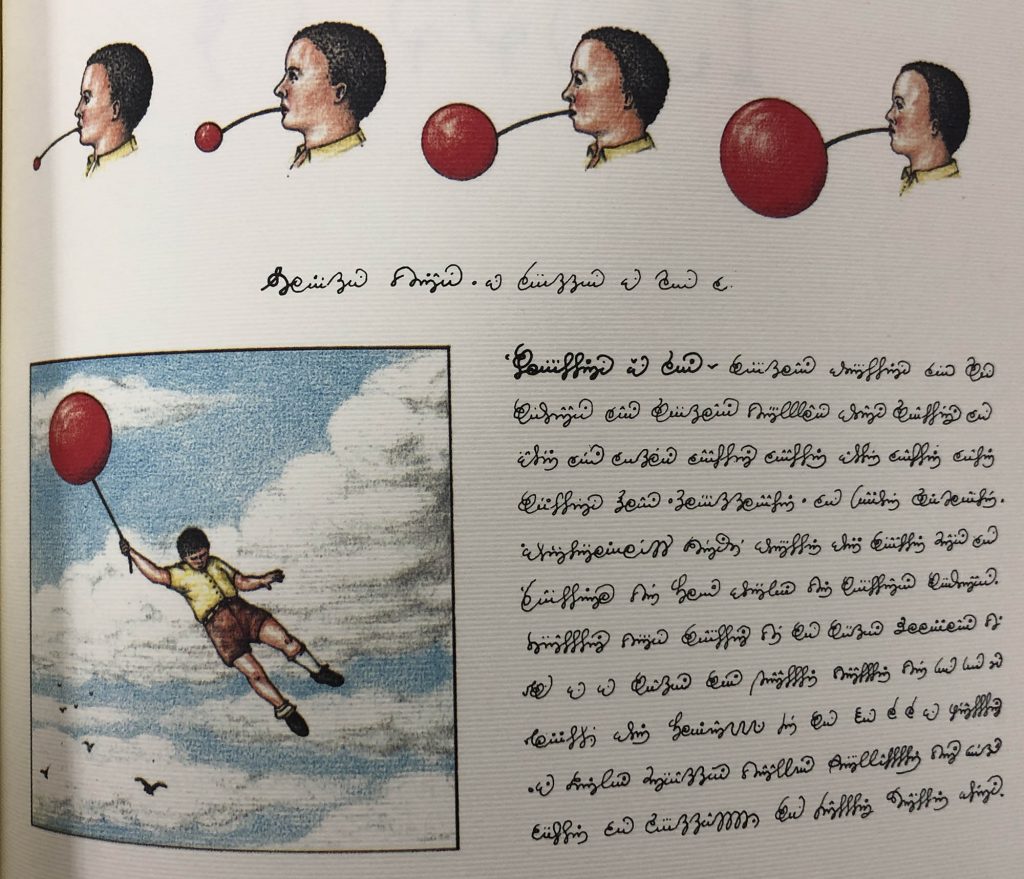We’ve written before about book publishers’ novel and sometimes misguided attempts at including additional media in bindings (see Robots 1:1). Many new acquisitions to the circulating collection include supplementary images, audio, or video on CD, and they often come to Conservation Services for a pocket that can be physically attached to the book to keep all the parts together.
 Night Falls on the Berlin of the Roaring Twenties (2018) is a wonderful graphic exploration of the cultural and technological “golden age” of the Weimar-era, immediately proceeding the rise of National Socialism. Illustrations by Robert Nippoldt, accompanied by texts from Boris Pofalla (translated by Ida Hattemer-Higgins), profile prominent individuals and places in the city.
Night Falls on the Berlin of the Roaring Twenties (2018) is a wonderful graphic exploration of the cultural and technological “golden age” of the Weimar-era, immediately proceeding the rise of National Socialism. Illustrations by Robert Nippoldt, accompanied by texts from Boris Pofalla (translated by Ida Hattemer-Higgins), profile prominent individuals and places in the city.
 To complete the experience, an audio CD of music from that period is included inside the rear board – and here is where the book design really shines.
To complete the experience, an audio CD of music from that period is included inside the rear board – and here is where the book design really shines.
 The rear paste-down features a print of a “cathedral style” table-top radio. The CD is printed to match the design of the radio and mounts to round plastic knob, rather than being stored in a plastic case or paper pocket. The audio track list is printed on the adjoining flyleaf as if it were coming from the radio.
The rear paste-down features a print of a “cathedral style” table-top radio. The CD is printed to match the design of the radio and mounts to round plastic knob, rather than being stored in a plastic case or paper pocket. The audio track list is printed on the adjoining flyleaf as if it were coming from the radio.

But the best part is when you remove the CD to reveal the vacuum tubes and other internal components of the radio! We like to complain about modern structures and design in book publishing, but in this case they really got it right.
